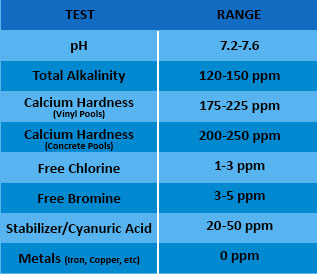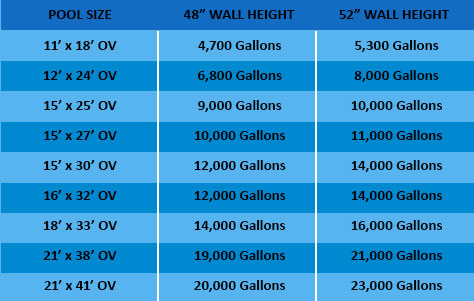Proper pool chemistry and well-balanced water are necessities for pool maintenance. If your water is out of balance, we have the supplies to help you adjust the problem. Whether it's pH, alkalinity, calcium hardness, or stabilizer, we have the chemicals to put your water chemistry back on track.
An unbalanced pool can lead to many headaches and wasted money. The effects can vary from a slight inconvenience to serious damage to your equipment or plumbing. Having the wrong chemical balance can be unsafe for swimmers, as it can irritate eyes and skin while creating stains or bleaching swimsuits. A sign that your pool is unbalanced can be seen just by looking into the water; if it's cloudy or if you've seen any green algae growing, then your chemicals are not in a good range. To avoid these issues, keep your pool balanced, and monitor the chemical levels regularly.
You want most readings to fit within a range. To make it easy, we've included a chart for you to use:

Always follow the dosing instructions of whatever chemical balancer you have. It will tell you how much to add based on your pool's size. To find how many gallons are in your pool, you'll need to find the volume. Here's a quick formula you can use:
Length x Width x Average Depth x Multiplier = Volume in Gallons
Note: All measurements should be in feet, including the depth. For above-ground pools, assume that the water depth is 6" less than the wall height, so if your pool height is 48", assume the depth is 3.5', and for a 52" deep pool, use 4'. If math isn't for you, take a look at the chart below featuring common pool sizes and how many gallons of water each size holds.

